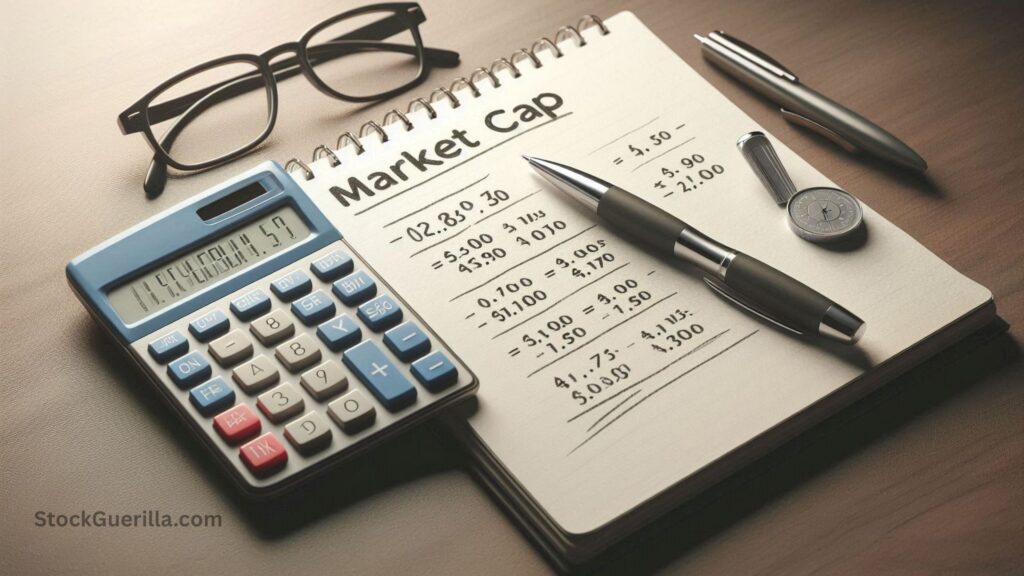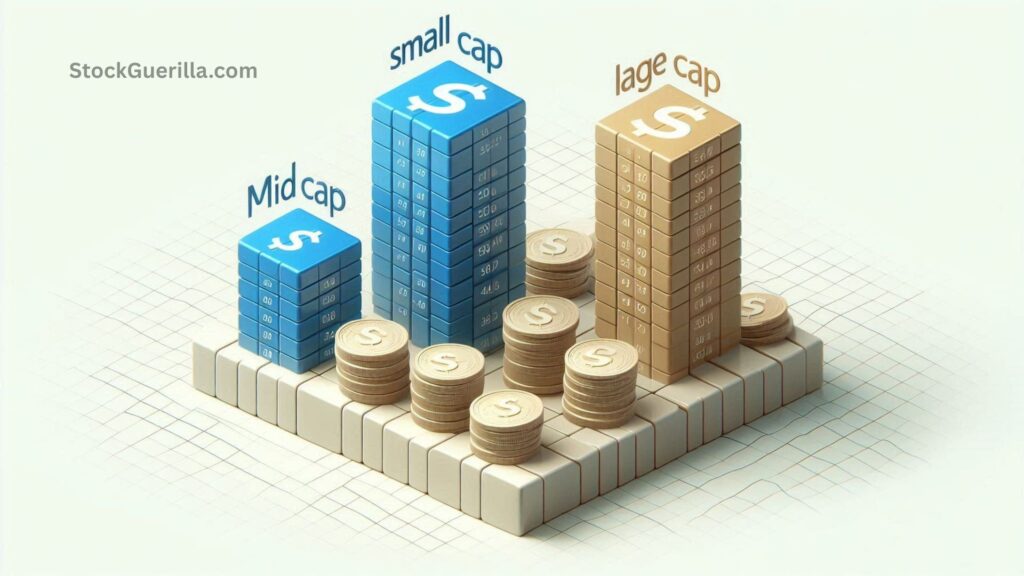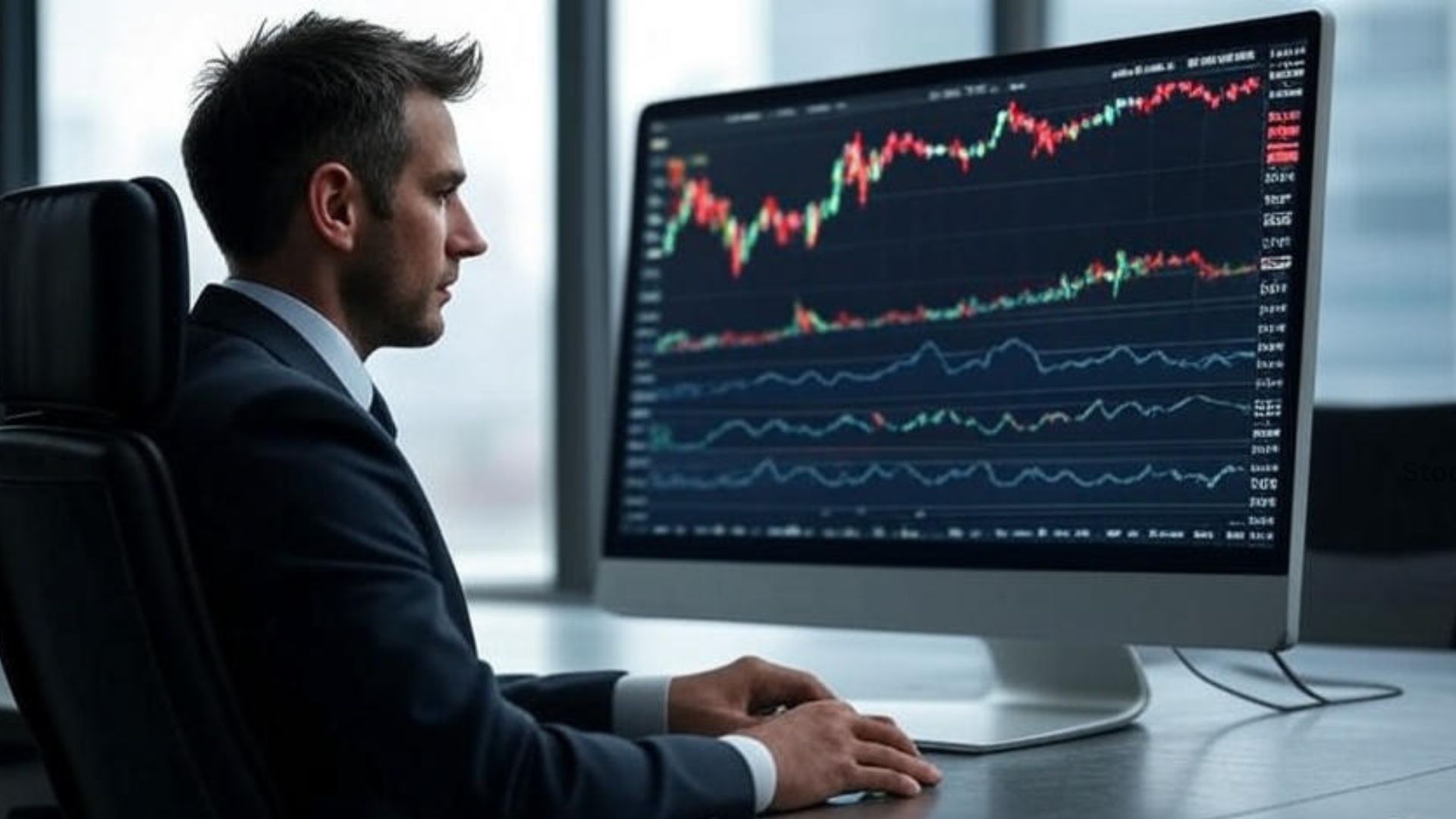What is Market Capitalization and Why does it matter?
When you first step into the stock market, you’ll often hear investors talk about a company’s market capitalization—or simply market cap. At first, it might sound like finance jargon, but it’s actually one of the simplest ways to understand a company’s size and value in the market.
Think of market cap as the stock market’s way of answering this question: “How much is this company worth right now?”
But here’s the thing—while market cap is a powerful tool for categorizing companies and comparing them, it’s not a perfect measure of a company’s true value. In this guide, we’ll break down everything you need to know about market capitalization, including how it’s calculated, its different types, what influences it, and how investors use it to make better decisions.
Market Cap Formula (It’s Really Simple)
The formula for market capitalization is as straightforward as it gets:

Market Cap = Current Stock Price × Total Outstanding Shares
📌 Example: Suppose a company’s stock is priced at ₹500, and it has 10 lakh shares outstanding.
- Market Cap = ₹500 × 10,00,000 = ₹50 crore
This number represents the combined market value of all the company’s shares. However, it doesn’t reveal the company’s debt levels, profits, or internal health. It only reflects how much investors—collectively—are willing to pay for the company at this moment.
Why Market Cap Matters
Market cap is more than just a number on a financial report. Here’s why investors and analysts care about it:
- Compare Company Size – Quickly understand whether a company is a global giant (like Apple), a mid-sized contender, or a smaller player.
- Portfolio Diversification – Many investors balance their portfolios across large-cap, mid-cap, and small-cap stocks to spread risk.
- Index Weighting – Market indices such as the S&P 500 or Nifty 50 use market cap to decide how much influence each company has on the index. Larger companies move the index more.
- Spotting Investment Opportunities – Comparing companies in the same industry by market cap can highlight undervalued businesses or overhyped ones.
👉 In short, market cap provides valuable context. A ₹5,000 crore company and a ₹50 lakh startup might both trade at ₹500 per share, but they’re worlds apart in size and stability.re.
Types of Market Cap (And What They Mean)
Companies are usually grouped into large-cap, mid-cap, and small-cap categories. Each has a different risk–reward profile:
✅ Large-Cap Stocks
- Examples: Reliance Industries, Apple, Microsoft
- Traits: Well-established, financially stable, and industry leaders
- Benefits: Lower risk, consistent dividends, steady returns
- Drawback: Growth tends to be slower compared to smaller companies
✅ Mid-Cap Stocks
- Traits: Growing companies, often challenging industry leaders
- Benefits: Higher growth potential than large caps, balanced risk
- Example: A regional bank expanding nationwide
- Drawback: More volatile than large caps, but less risky than small caps
✅ Small-Cap Stocks
- Traits: Young, emerging companies with high growth potential
- Benefits: Possibility of explosive returns
- Drawback: Higher volatility and greater risk of failure
👉 Your choice depends on your risk appetite and investment goals. If you want stability, large caps are safer. For balanced growth, mid-caps work well. And if you’re aiming for high-risk, high-reward plays, small caps could be the right pick.
Key Ratios That Help You Dig Deeper
While market cap gives a quick snapshot, it doesn’t tell the full story. Smart investors combine it with financial ratios for deeper insights:
- P/E Ratio (Price-to-Earnings) = Market Cap ÷ Net Income → Shows if a stock is expensive relative to earnings.
- Price-to-Free-Cash-Flow = Market Cap ÷ Free Cash Flow → Helps measure how efficiently a company generates cash.
- P/B Ratio (Price-to-Book) = Market Cap ÷ Book Value → Compares market value with the actual value of assets.
- EV/EBITDA = Enterprise Value ÷ EBITDA → Captures profitability while factoring in debt and cash.
👉 These ratios give investors a more complete picture of whether a company is fairly valued or overpriced.
What Is Free-Float Market Cap?
Not all shares are available for public trading. Some are held by promoters, governments, or insiders.

- Full Market Cap = Includes all outstanding shares.
- Free-Float Market Cap = Includes only publicly tradable shares.
Most stock exchanges, like NSE and BSE, use the free-float method for calculating index weightage since it better represents market activity.
Limitations of Market Cap
Market cap is useful, but it has its blind spots. Here are its key limitations:
- Doesn’t reveal debt levels, liquidity, or overall financial health.
- Fluctuates daily based on stock prices.
- Ignores intangible assets like patents, brand value, or customer base.
- Not always comparable across industries (a bank vs. a tech startup).
- Doesn’t indicate whether a stock is undervalued or overvalued.
- Impacted by corporate actions like stock splits or buybacks.
What Affects Market Cap?
A company’s market cap can change rapidly due to:

- Stock Price Movements – Driven by positive or negative news.
- Share Issuance/Buybacks – Increasing or decreasing the number of outstanding shares.
- Earnings Announcements – Profit or loss results can boost or drag market cap.
- Market Sentiment – Global events, interest rates, or investor confidence.

Also Read: What are the Top Passive Income Ideas for 2025?
Other Ways to Measure a Company’s Value

Market cap is only one piece of the valuation puzzle. Other methods include:
- Fundamental Analysis – Studying balance sheets, income statements, and cash flow reports.
- Relative Valuation – Comparing financial ratios against industry peers.
- Discounted Cash Flow (DCF) – Estimating present value of future cash flows.
- Comparable Company Analysis (CCA) – Comparing with similar companies.
- Qualitative Factors – Leadership quality, innovation, brand strength, and industry trends.
📖 For more on valuation approaches, see Forbes: Stock Valuation Methods.

Also Read: How does Growth Investing Differ from Value Investing?
Market Cap vs. Shareholders’ Equity
| Aspect | Market Capitalization | Shareholders’ Equity |
|---|
| Meaning | Market’s valuation of a company | Net worth = Assets – Liabilities |
| Driven by | Stock price & investor sentiment | Company’s financial records |
| Usage | Compare company size, categorize stocks | Assess financial health |
| Includes Debt? | ❌ No | ✅ Yes |
| Frequency of Change | Daily | Quarterly/annually |
| Perspective | Forward-looking | Historical snapshot |
Market Cap vs. Enterprise Value (EV)
While market cap measures equity value, Enterprise Value (EV) offers a more complete picture.
EV = Market Cap + Debt + Preferred Shares – Cash
👉 EV is widely used in mergers and acquisitions since it reflects the real cost of buying a business.
📖 For a detailed comparison, see Investopedia: Enterprise Value.

Also Read: How to Set Up Alerts for Stock Price Movements?
Final Thoughts
Market capitalization is a simple yet powerful tool to gauge company size and compare businesses. But investors shouldn’t rely on it alone.
For smarter decisions:
- Use market cap alongside ratios like P/E, P/B, and EV/EBITDA.
- Consider both quantitative factors (profits, cash flow, debt) and qualitative ones (management, industry trends).
- Remember, true company value goes beyond market cap—it’s a blend of financials, future growth potential, and competitive position.
FAQs About Market Capitalization
Q1. Is a higher market cap always better?
Not necessarily. Larger companies are usually safer but may offer slower growth. Small caps can deliver higher returns but with higher risk.
Q2. How often does market cap change?
It changes daily as stock prices move. Major news or earnings results can cause big swings.
Q3. Can two companies with the same market cap be very different?
Yes. One could have heavy debt and weak profits, while the other is cash-rich and highly profitable.
Q4. What’s the difference between free-float and full market cap?
Full market cap includes all shares, while free-float counts only publicly tradable shares.
Q5. Is market cap the best way to value a stock?
No. It’s a starting point. Investors should also use ratios, DCF, and qualitative factors for deeper insights.




Post Comment